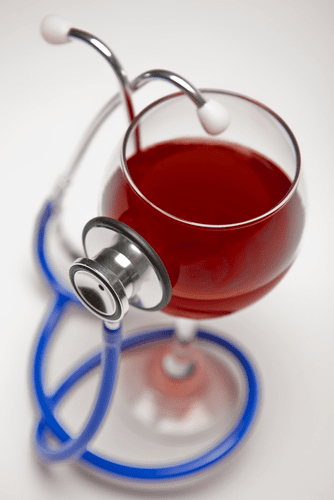Compared to young adults, the plasma concentrations of oxycodone were increased approximately 15%. Of the total number of subjects (445) in clinical studies of oxycodone hydrochloride controlled-release tablets, 148 (33.3%) were age 65 and older (including those age 75 and why is oxy so addictive older) while 40 (9.0%) were age 75 and older. In clinical trials with appropriate initiation of therapy and dose titration, no untoward or unexpected adverse reactions were seen in the elderly patients who received oxycodone hydrochloride controlled-release tablets. Thus, the usual doses and dosing intervals may be appropriate for elderly patients.
- Fatal side effects can occur if you use opioid medicine with alcohol, or with other drugs that cause drowsiness or slow your breathing.
- Dose proportionality has been established for OXYCONTIN 10 mg, 15 mg, 20 mg, 30 mg, 40 mg, 60 mg, and 80 mg tablet strengths for both peak plasma concentrations (Cmax) and extent of absorption (AUC) (see Table 6).
- An interaction between two medications does not always mean that you must stop taking one of the medications; however, sometimes it does.
- By the early 2000s, the FDA could no longer ignore growing reports about OxyContin abuse, diversion, and overdose deaths.
- Withdrawal symptoms can occur in breast-fed infants when maternal administration of an opioid analgesic is stopped, or when breast-feeding is stopped.
- Stop taking oxycodone and get help right away if you have any of the following symptoms of a serious allergic reaction.
What should I do if I forget a dose?
Titrate the dosage of OXYCONTIN slowly in geriatric patients and frequently reevaluate the patient for signs of central nervous system https://ecosoberhouse.com/ and respiratory depression. OXYCONTIN may increase the risk of serious adverse reactions such as those observed with other opioid analgesics, including respiratory depression, apnea, respiratory arrest, circulatory depression, hypotension, or shock. OXYCONTIN may cause severe hypotension, including orthostatic hypotension and syncope in ambulatory patients. There is an increased risk in patients whose ability to maintain blood pressure has already been compromised by a reduced blood volume or concurrent administration of certain CNS depressant drugs (e.g., phenothiazines or general anesthetics).
(Dan Ray / For The Times)
Instruct patients to swallow OXYCONTIN tablets whole; crushing, chewing, or dissolving OXYCONTIN tablets can cause rapid release and absorption of a potentially fatal dose of oxycodone. Life-Threatening Respiratory DepressionSerious, life-threatening, or fatal respiratory depression may occur with use of OXYCONTIN, especially during initiation or following a dosage increase. Instruct patients to swallow OXYCONTIN tablets whole; crushing, chewing, or dissolving OXYCONTIN tablets can cause rapid release and absorption of a potentially fatal dose of oxycodone see Warnings and Precautions (5.2). The goal of the REMS is to reduce serious adverse outcomes resulting from inappropriate prescribing, abuse, and misuse of opioid analgesics, while maintaining patient access to these medications. Adverse outcomes of concern include addiction, unintentional overdose, and death.
The FDA’s Evolving Response
Tolerance is normal and is expected if you take this medication for a long time. Take it as directed on the prescription label at the same time every day. This medicine may be used for other purposes; ask your health care provider or pharmacist if you have questions.
Health News
In July 2001, nearly six years after the drug’s approval, the agency took its first major corrective actions. Sales grew from $48 million in its first year to nearly $1.1 billion by 2000. By 2001, just five years after introduction, OxyContin had become the single most prescribed brand-name narcotic for treating moderate-to-severe pain in the entire country. The consequences of the FDA’s 1995 approval and Purdue’s subsequent marketing blitz weren’t theoretical.


In a randomized, double-blind, placebo-controlled 5-period crossover pharmacodynamic study, 30 recreational opioid users with a history of intranasal drug abuse received intranasally administered active and placebo drug treatments. Oxycontin (oxycodone hydrochloride) is available as controlled-release tablets in strengths of 10, 15, 20, 30, 40, 60, 80, and 160 mg tablets (60 mg and above used only for opioid tolerant patients). Follow the directions on your prescription label and read all medication guides. Never use oxycodone in larger amounts, or for longer than prescribed.
Oxycodone Capsules or Tablets
Get emergency medical help if you have signs of an allergic reaction drug addiction treatment to oxycodone, including hives, difficulty breathing, or swelling of your face, lips, tongue, or throat. Medicines that interact with OxyContin may either decrease its effect, affect how long it works, increase side effects, or have less of an effect when taken with OxyContin. An interaction between two medications does not always mean that you must stop taking one of the medications; however, sometimes it does. Speak to your doctor about how drug interactions should be managed. With appropriate medical guidance, you can limit the potential harm that prescribed OxyContin can cause. Taking medications only as prescribed is the first step to protecting yourself and your loved ones.

By August 1999, nineteen states had enacted laws protecting physicians from prosecution for prescribing large painkiller quantities, provided they were for treating documented medical disorders. For most of the 20th century, the medical establishment treated strong opioids with extreme caution. Their use was largely confined to severe acute pain following major surgery and intractable pain from terminal cancer. The deeply ingrained fear of iatrogenic addiction—addiction caused by medical treatment—kept opioids from being used for chronic, non-cancer-related pain conditions. Talk to your health care provider if you use or used to use street drugs or have or had a problem using alcohol or prescription medicines or live with someone with this problem.
- Discuss the availability of naloxone for the emergency treatment of opioid overdose with the patient and caregiver and assess the potential need for access to naloxone, both when initiating and renewing treatment with OXYCONTIN.
- Keep oxycodone combination products in a safe place so that no one else can take it accidentally or on purpose.
A person typically takes liquid, concentrated solution, tablets, or capsules every 4 to 6 hours with or without food. This is generally either as necessary for pain or as a regularly scheduled medication. Individuals generally take extended-release tablets every 12 hours with or without food, while they can take extended-release capsules every 12 hours with food. While opioids, such as OxyContin, are generally only available through prescription, people can find them illegally. However, it is important to only use opioids for their intended uses and only as a healthcare professional has directed.
Since oxycodone is used for pain, you are not likely to miss a dose. Also, tell your healthcare provider if you are pregnant, intending to become pregnant, or breastfeeding. This is more likely in elderly or ill patients, but can occur in anyone taking this medicine. Long-term use of opioid medication, such as this medicine, may affect fertility (ability to have children) in men or women. It is not known whether opioid effects on fertility are permanent. If you are taking the extended-release tablets (Oxycontin®), swallow the tablets one at a time with plenty of water.

